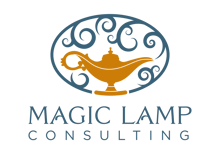If the thought of getting your board to fundraise makes you wince, you’re not alone. Many nonprofit...
Board Engagement Strategies to Boost Governance & Fundraising

An engaged board of directors is one of the most powerful assets a nonprofit can have. When board members are informed, aligned, and energized, they contribute more than oversight—they become champions, fundraisers, and strategic partners in mission delivery.
Yet many nonprofit leaders struggle with inconsistent board participation, unclear expectations, or discomfort around asking members to fundraise. The good news? With the right strategies, you can turn your board into a high-performing team that strengthens governance and fuels fundraising success.
Here are actionable steps to engage your board more deeply, with a focus on both mission stewardship and financial support.
1. Start with Shared Expectations
We believe clear roles lead to confident contributions. Every board member should understand their responsibilities from day one. A detailed Board Member Expectations Agreement helps set the tone for accountability and involvement.
Key elements to include:
- Participation in meetings and committees
- Personal giving expectations (give/get policies)
- Fundraising support (e.g., attending events, making introductions)
- Advocacy and ambassadorship for the mission
Example Your Nonprofit Can Implement: Many organizations start with their onboarding process to include a board commitment letter, which board members sign annually. This simple tool leads to increased clarity and consistency in participation.
Expert Resource: BoardSource offers templates and best practices for board role definitions and governance.
2. Align Board Work with Individual Strengths
Instead of forcing every board member into the same mold, offer a menu of engagement options based on their comfort level and skills. This makes board work feel more personal and less transactional.
Ideas for varied involvement:
- Host a donor cultivation event at their home or business
- Share your nonprofit’s impact story on LinkedIn or in community groups
- Connect the executive director with key contacts or funders
- Join a committee (e.g., governance, finance, development)
- Offer professional expertise (e.g., legal, marketing, DEI strategy)
Tool Tip: Use a “Board Member Engagement Survey” to understand what motivates each person and how they’d prefer to contribute.
3. Make Fundraising a Team Effort
Many board members are hesitant to fundraise because they assume it requires cold calls and awkward asks. In reality, there are many roles they can play in the donor cycle—identifying prospects, opening doors, attending events, thanking donors, and sharing impact stories.
Strategies to make fundraising more accessible:
- Host a board fundraising training led by staff or a consultant
- Provide sample emails or scripts they can personalize
- Create a board fundraising dashboard to track outreach and wins
- Celebrate small wins publicly to build momentum
Example You Can Implement in Your Nonprofit: Try inviting each board member to bring one guest to a donor lunch. The executive director can give a 10-minute impact talk, followed by informal mingling. No direct ask was made, but several attendees might become new donors.
4. Build a Culture of Ongoing Education
If your board only hears updates during quarterly meetings, they may feel disconnected from your day-to-day work. Regular education keeps them engaged and aligned with your mission and goals.
Ways to educate and inspire:
- Share short monthly updates with stories, photos, or stats
- Invite staff or program participants to board meetings to share impact
- Provide access to webinars or sector trend reports
- Host an annual board retreat with training, team-building, and strategic reflection
Bonus: Incorporate board self-assessments annually to reflect on performance and identify growth areas.
5. Recognize, Celebrate, and Steward Your Board
Just like donors, board members want to know they matter. Recognizing their contributions—both financial and otherwise—builds loyalty and deepens commitment.
Ways to show appreciation:
- Handwritten thank-you notes after big meetings or milestones
- Public recognition at events, in newsletters, or on social media
- Celebrating board anniversaries, birthdays, or professional achievements
- Hosting an annual board appreciation dinner or retreat
6. Use Committees and Task Forces to Deepen Engagement
We have found that sometimes smaller groups get more done. Committees allow board members to dive deeper into areas they care about—without overwhelming the full board. Effective committees also take pressure off staff and distribute leadership more evenly.
Common committees include:
- Development: Fundraising strategy, donor engagement
- Governance: Board recruitment, policy review
- Finance: Budget oversight, audits
- DEI Task Forces, Strategic Planning Groups, or Capital Campaign Committees as needed
Staff support is essential to keep committees focused and action-oriented.
Our Final Thoughts
A disengaged board is a missed opportunity—but with structure, clarity, and a little creativity, your board can become one of your greatest strategic assets. By aligning board work with your mission and fundraising goals, you empower members to lead with confidence, contribute with purpose, and help drive your organization forward.
At Magic Lamp Consulting, we help nonprofits strengthen board engagement through custom trainings, governance planning, and fundraising strategy. If you’re ready to activate your board for greater impact, let’s connect.
Your board is full of potential. We encourage you to reach out to the Magic Lamp Consulting team if you are looking for ways to enhance the power of your board!



